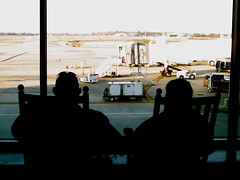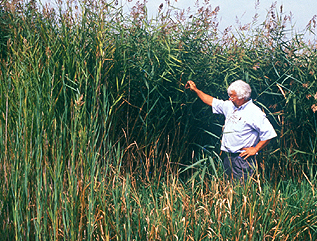 |
| Rocking chairs in the Charlotte airport. (Photo credit: nickhall) |
Just getting to ASAS every year is a adventure. Between making sure I have the clothes and shoes and definitely don't forget the poster, to planning what presentations I'll see. There's a lot going on and I love making the plans. This year I flew out early to attend the pre-conferece put on by the Nutritional Science Association and take part in the graduate student poster competition.
But, to get there, I had to fly East to go West. Fortunately, my layover in
Charlotte was lovely. I love all the windows and rocking chairs! Oh, and the musicians. I
almost wished for a longer layover. As it was I had time to grab a late lunch and rush to my next plane, no time for pictures even.
 |
| Cloud sheep? |
Then, it was on to
Phoenix! I love watching the scenery from the sky, especially when heading into place I have not been before. I've spent most of my life East of the Mississippi, so Phoenix was a unique view. My first thought was wow, it's so brown. But over the 5 days I was there I began to see the shades or tan and cream and cocoa in that brown. The mountains in the distance around the city were so lovely to see every day walking back and forth to the convention center each day. It's a different and beautiful landscape.
 |
| Phoenix from the sky! |
After 4.5 hours on the plane I was happy to be getting out. It was a bit of a walk from the gate to luggage and about half way there I was completely distracted by the carpet when I realized the pattern had airplanes in it. So neat! I then promptly forgot about the carpet when I noticed the mountains!
 |
| Airplane carpet. |
 |
| Mountains! |
I stayed downtown, just a few blocks from the convention center at the Renaissance. All week I wondered about the buttons on the elevator. The lack of a 13th floor I understood. Fairly standard for older buildings. But for the life of me I could not figure out what they had done with floors 2-4. On my last night in Phoenix I finally learned the answer to that mystery. Those are their conference center floors and accessed by a separate set of elevators and escalators. Interesting solution to keeping hotel activities separate.
 |
| Bad picture of the elevator missing floors. |































